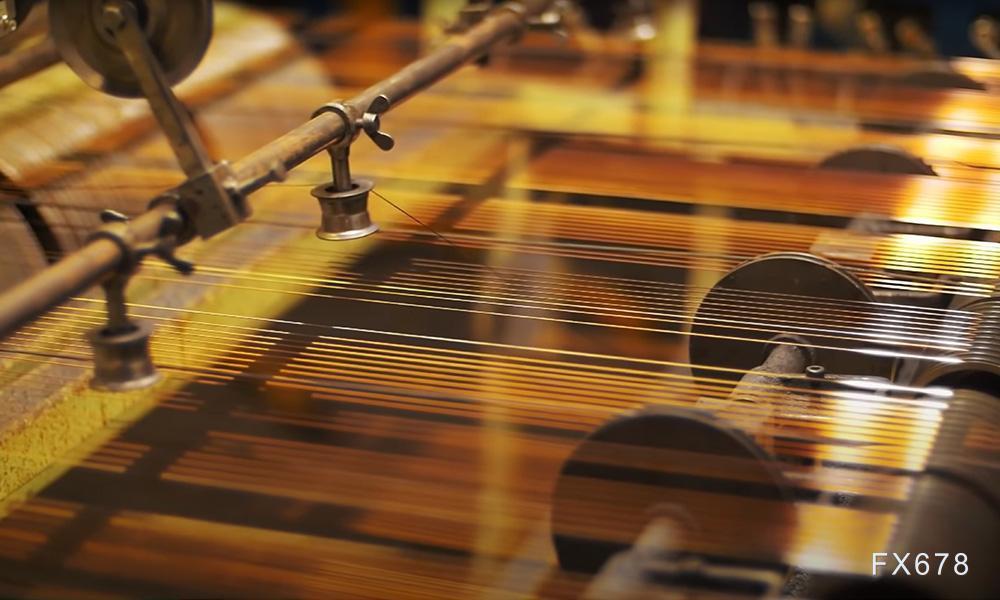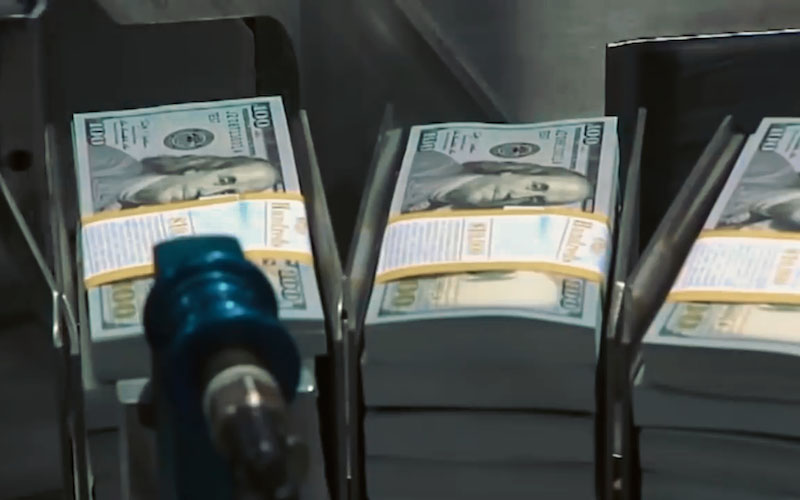CITIC Securities Futures: US PMI cools, copper prices fluctuate weakly.
2025-11-04 10:46:26

Ferroalloys: The spot market for ferroalloys was weak, with prices falling slightly. Steel mill production intensity decreased, profitability began to deteriorate, and some steel mills began planning maintenance shutdowns, indicating weakening demand. There is still time before winter stockpiling, and downstream restocking has not yet begun. Factory production is normal, and output remains high. Manganese silicon plants are experiencing significantly increased inventory pressure, while ferrosilicon inventory is relatively normal. Ferrosilicon fundamentals continue to be stronger than ferrosilicon fundamentals. Futures prices entered a consolidation phase after hitting the upper cost level. Recommendation: Consider shorting the January futures contract at higher levels, or appropriately selling out-of-the-money call options up to three strikes from the January contract.
Rubber: On Monday, domestically produced full-latex rubber was priced at 14,650 yuan/ton, up 50 yuan/ton from the previous day; Thai No. 20 mixed rubber was priced at 14,600 yuan/ton, down 50 yuan/ton from the previous day. Raw materials: Yesterday, Thai latex closed at 56.0 baht/kg, unchanged from the previous day; Thai cup lump closed at 51.9 baht/kg, down 1.4 baht/kg from the previous day; Yunnan latex closed at 13.7 yuan/kg, down 0.4 yuan/kg from the previous day; Hainan latex closed at 13.1 yuan/kg, unchanged from the previous day. As of November 2, 2025, the total inventory of natural rubber in Qingdao, including bonded and general trade, was 447,700 tons, an increase of 15,400 tons, or 3.57%, from the previous period. Bonded warehouse inventory was 68,300 tons, a decrease of 0.58%; general trade inventory was 379,400 tons, an increase of 4.36%. In Qingdao, the sample bonded warehouse natural rubber inventory saw an increase of 1.79 percentage points in the inbound rate and 0.79 percentage points in the outbound rate; the general trade warehouse inbound rate increased by 4.30 percentage points, while the outbound rate decreased by 1.49 percentage points. Viewpoint: Recent fundamental contradictions are limited. With the second wave of downward pressure from Sino-US trade relations, the current valuation bubble in unilateral prices may have been largely digested. Looking ahead, considering that the deterioration of Sino-US trade relations has not been substantial, it means that China's economic growth has not actually faced additional downward pressure. The demand growth driven by anti-involution is already a reality. That is, assuming no unexpected changes on the supply side (seasonal increases in supply are rationally expected), the end point of demand-side pricing should not be lower than before the anti-involution measures were introduced in July. Furthermore, US tariffs this year may continue to suppress global demand growth. Therefore, it is expected that the future unilateral price range for RU&NR will be higher than the low point in early July but lower than the high point in mid-July.
Methanol: In terms of spot prices, Daqi was 1970 and Luoyang was 2070. Upstream factory auctions resulted in failed bids, market sentiment was pessimistic, and order transfers decreased. In the short term, the winter stockpiling window for coal is expected to provide some support to the raw material side. Upstream methanol production remains high, coupled with delayed maintenance of gas-fired plants in inland areas, suggesting that inland plants will maintain high supply levels in the short term. Inventories in producing areas are at a moderate level, with some demand for destocking during the winter. Traders have high inventories and are mainly catering to immediate downstream demand. On Monday, the basis for East China spot prices was 0.1-5.2, and for November, it was 0.1-1.0, with the far-month basis continuing to weaken. In the short term, high port inventories and weak profits persist, and the industry chain's profits are recovering downstream, indicating that macro sentiment has been somewhat overdrawn. In the medium to long term, attention should be paid to Middle Eastern weather, Southwest gas prices, and environmental policies in producing areas. Operationally, methanol is expected to fluctuate widely in the short term; a wait-and-see approach is recommended. The reference range for methanol 2601 is 2100-2230 yuan/ton.
Urea: In terms of spot prices, the ex-factory price in Shandong is 1540 yuan/ton, and the ex-factory price in Henan is 1530-1540 yuan/ton. The domestic urea market is mainly fluctuating, with better transactions at lower prices. On the supply side, weekly urea production has rebounded to nearly 200,000 tons, and high production is expected to continue in the short term; some agricultural demand and reserve demand have been released, which will reduce the pressure on inland inventory to some extent; port inventory is being consumed rapidly, reaching a low level for the year; recent news in the compound fertilizer industry has been concentrated, which may boost demand to some extent. Overall, upstream suppliers have a certain willingness to support prices, and the supply and demand contradiction of urea has not been resolved. If futures prices rise significantly, there will be profit-taking in both spot and futures markets, resulting in short-term fluctuations and downward pressure; in the medium to long term, attention should be paid to export quotas and winter stockpiling. In terms of operation, urea prices are expected to fluctuate in the short term, with the urea 2601 contract expected to fluctuate within a range of 1560-1660 yuan/ton.
Soda Ash: Soda ash futures fell sharply on Monday, while spot prices remained stable to decline. The commodity market saw more declines than gains on Monday, with weak market sentiment. From a fundamental perspective, recent soda ash maintenance schedules have decreased, and last week's soda ash production increased by 17,000 tons to 757,000 tons. Recent production changes have been minimal, and supply-side pressure continues. Downstream demand has stabilized compared to the previous week. The latest soda ash plant inventory decreased by 10,000 tons to 1,692,000 tons compared to last Thursday, and the latest delivery warehouse inventory decreased by 4,000 tons to 677,000 tons. There were no changes in float glass and photovoltaic glass production lines last week; this week, one photovoltaic glass production line underwent cold repairs. Recently, the combined daily melting capacity of float glass and photovoltaic glass has generally stabilized, with demand for heavy soda ash remaining stable and demand for light soda ash temporarily stable. Downstream and midstream purchasing activity is generally moderate. In September, soda ash imports rose slightly to 400 tons, while exports decreased to 187,900 tons, with exports showing a slight decline. On the macro front, recent domestic real estate sales data showed a month-on-month decline, falling below the level of the same period last year; the impact of international macroeconomic factors was neutral (rising US dollar index, reduced concerns about trade frictions); and domestic policy disruptions weakened. Overall, in the short term, new soda ash production capacity coming online will increase supply while demand remains weak, leading to a period of low-level fluctuations. Regarding warehouse receipts, soda ash warehouse receipts increased by 2,115 to 10,666 on Monday. Short-term soda ash futures prices are expected to fluctuate weakly, with SA2601 expected to trade within the 1180-1210 range intraday.
Glass: Glass futures rose and then fell on Monday, while spot prices remained stable to decline. Short-term glass fundamentals have weakened slightly, with demand showing weakness. Last week, glass production remained stable compared to the previous week, downstream purchasing activity improved, and inventory decreased compared to the previous week. The latest glass inventory decreased by 41,000 tons to 3.29 million tons, an increase of 28.9% year-on-year. There were no changes in glass production lines last week. Recently, daily glass melting capacity has increased slightly, with the latest daily melting capacity in operation at 161,275 tons/day, up 2.1% year-on-year. From January to September, the completed floor space of domestic housing decreased by approximately 15.3% year-on-year (the decline narrowed). Recent real estate sales data decreased month-on-month and are lower than the same period last year. The latest number of deep-processing orders for glass increased by 0.4 days month-on-month to 10.8 days, a decrease of 16.1% year-on-year. Short-term glass supply remains stable, while demand is dragging down prices, with futures prices temporarily trending weakly. Short-term glass futures prices are expected to trend weakly, with FG2601 expected to trade between 1080-1120 intraday.
Rebar: In terms of the industry, rebar production increased by 55,200 tons to 2,125,900 tons last week, while social inventory decreased by 66,800 tons to 4,308,100 tons, and mill inventory decreased by 129,200 tons to 1,717,100 tons. Apparent demand rebounded by 61,900 tons compared to the previous week. Rebar demand is seasonally recovering, while supply is also increasing. Under this situation of both supply and demand growth, the fundamentals are not improving significantly, and the pressure to reduce inventory remains. The relative positive factor is cost support, and the trend is expected to continue its volatile movement.
Hot-rolled coil: Last week, hot-rolled coil production increased by 11,000 tons, while inventory decreased by 83,300 tons. Surface demand rebounded by 51,600 tons to 3,318,900 tons. Short-term supply and demand pressures remain high, and inventory reduction during the peak season is less than expected. Demand is performing reasonably well, but there are underlying concerns. The fundamental fabric market is unlikely to see substantial improvement, with cost support being the relative positive factor. The market is expected to continue its volatile trend. Strategically, the short-term trading range for rebar 2601 is estimated at 3050-3200 yuan/ton; the trading range for hot-rolled coil 2601 contract is estimated at 3200-3400 yuan/ton.
This post, authorized by CITIC Securities Futures Company, is forwarded by "a professional market analysis and information website focusing on domestic futures and derivatives trading": [http://].
- Risk Warning and Disclaimer
- The market involves risk, and trading may not be suitable for all investors. This article is for reference only and does not constitute personal investment advice, nor does it take into account certain users’ specific investment objectives, financial situation, or other needs. Any investment decisions made based on this information are at your own risk.





















